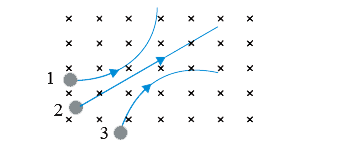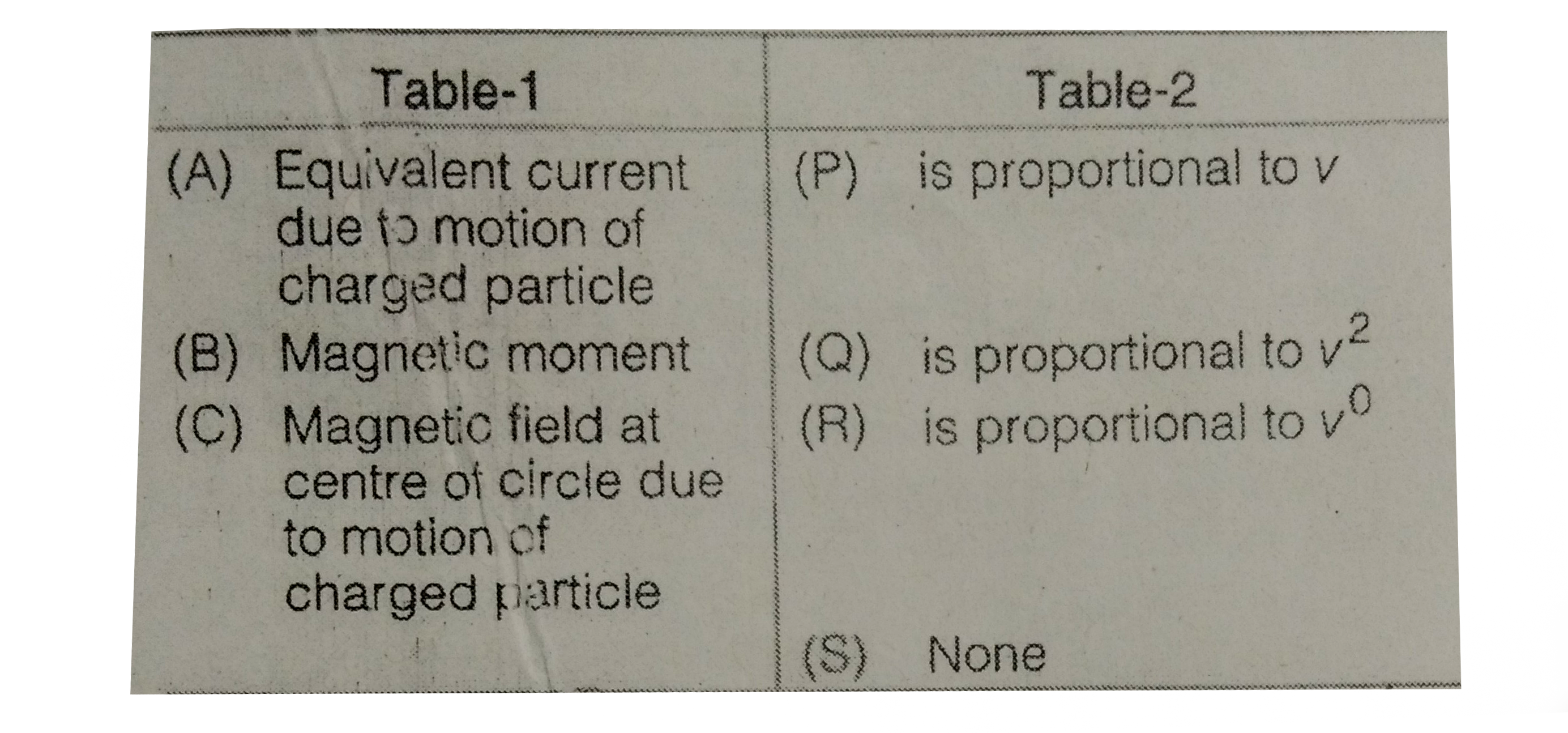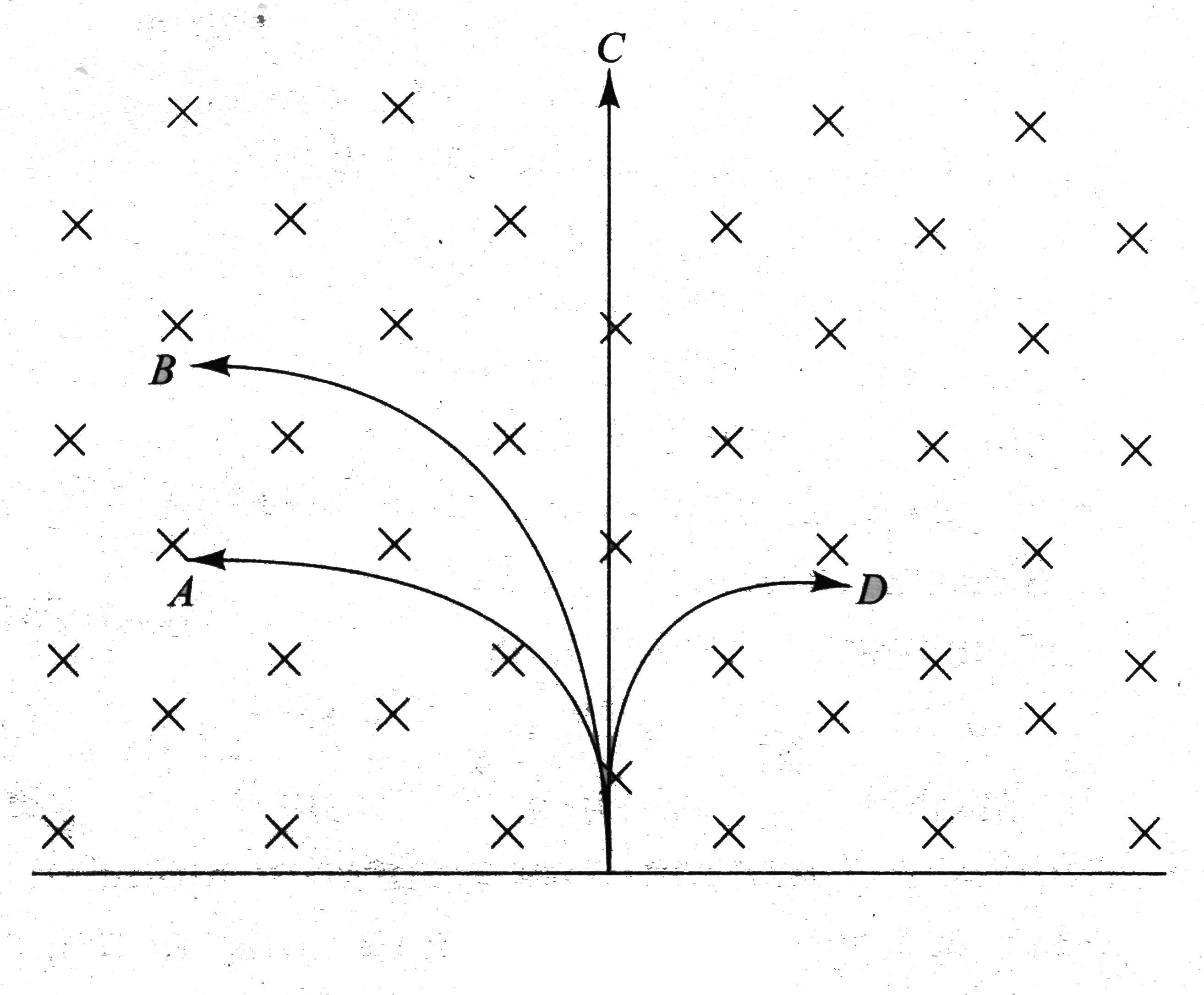A particle moves in a region having a uniform magnetic field and a parallel, uniform electric field. At some instant, the velocity of the particle is perpendicular to the field direction. The path of the particle will be
a straight line
a circle
a helix with uniform pitch
a helix with nonuniform pitch
The correct Answer is:a helix with nonuniform pitch
To solve the problem, we need to analyze the motion of a charged particle in the presence of both a magnetic field and an electric field. The key points to consider are the effects of each field on the particle's motion.
1. Understanding the Fields:
- We have a uniform magnetic field (B) and a uniform electric field (E) that are parallel to each other.
- The velocity (v) of the charged particle is perpendicular to the direction of both fields at a certain instant.
2. Effect of the Magnetic Field:
- When a charged particle moves in a magnetic field, it experiences a magnetic force given by the equation:
FB=q(v×B)
- Since the velocity is perpendicular to the magnetic field, the magnetic force will act perpendicular to both the velocity and the magnetic field, causing the particle to move in a circular path.
3. Effect of the Electric Field:
- The electric field exerts a force on the charged particle given by:
FE=qE
- This force acts in the direction of the electric field and causes the particle to accelerate.
4. Combining the Effects:
- The magnetic force causes circular motion, while the electric force causes linear acceleration in the direction of the electric field.
- As a result, the particle will not only move in a circle due to the magnetic field but will also gain a component of motion along the direction of the electric field.
5. Resulting Path:
- The combination of circular motion from the magnetic field and linear motion from the electric field results in a helical path.
- However, since the electric field causes a constant acceleration, the pitch of the helix will not be uniform; it will vary as the particle accelerates.
6. Conclusion:
- Therefore, the path of the particle will be a helix with non-uniform pitch.
Final Answer:
The path of the particle will be a helix with non-uniform pitch.
- We have a uniform magnetic field (B) and a uniform electric field (E) that are parallel to each other.
- The velocity (v) of the charged particle is perpendicular to the direction of both fields at a certain instant.
- When a charged particle moves in a magnetic field, it experiences a magnetic force given by the equation:
FB=q(v×B)
- Since the velocity is perpendicular to the magnetic field, the magnetic force will act perpendicular to both the velocity and the magnetic field, causing the particle to move in a circular path.
- The electric field exerts a force on the charged particle given by:
FE=qE
- This force acts in the direction of the electric field and causes the particle to accelerate.
- The magnetic force causes circular motion, while the electric force causes linear acceleration in the direction of the electric field.
- As a result, the particle will not only move in a circle due to the magnetic field but will also gain a component of motion along the direction of the electric field.
- The combination of circular motion from the magnetic field and linear motion from the electric field results in a helical path.
- However, since the electric field causes a constant acceleration, the pitch of the helix will not be uniform; it will vary as the particle accelerates.
- Therefore, the path of the particle will be a helix with non-uniform pitch.
The path of the particle will be a helix with non-uniform pitch.
Topper's Solved these Questions
- MAGNETIC FIELDBOOK - HC VERMA ENGLISHCHAPTER - MAGNETIC FIELDEXERCISE - Exercises
60 Videos
- MAGNETIC FIELDBOOK - HC VERMA ENGLISHCHAPTER - MAGNETIC FIELDEXERCISE - QUESTIONS FOR SHORT ASNWER
10 Videos
- MAGNETIC FIELDBOOK - HC VERMA ENGLISHCHAPTER - MAGNETIC FIELDEXERCISE - worked out Examples
11 Videos
- LIGHT WAVESBOOK - HC VERMA ENGLISHCHAPTER - LIGHT WAVESEXERCISE - Question for short Answer
11 Videos
- MAGNETIC FIELD DUE TO CURRENTBOOK - HC VERMA ENGLISHCHAPTER - MAGNETIC FIELD DUE TO CURRENTEXERCISE - questions for short answer
12 Videos
Similar Questions
A charged particle moves in a uniform magnetic field. The velocity of the particle at some instant makes an acute angle with the magnetic field. The path of the particle will be
View SolutionIn a region, steady and uniform electric and magnetic fields are present . These two fields are parallel to each other. A charged particle is released from rest in this region . The path of the particle will be a
View SolutionThe path of a charged particle in a uniform magnetic field, when the velocity and the magnetic field are perpendicular to each other is a
View SolutionThe acceleration of a charged particle in a uniform electric field is
View SolutionParticles 1, 2 and 3 are moving perpendicular to a uniform magnetic field, then particle

View SolutionThe path of a charged particle moving in a uniform steady magnetic field cannot be a
View SolutionA charged particle is moving in a circular path in uniform magnetic field. Match the following.

View SolutionIf a charged particle enters perpendicular in the uniform magnetic field then
View SolutionA neutron, a proton, an electron and an α−particle enter a region of uniform magnetic field with equal velocities. The magnetic field is perpendicular to the paper and directed into it. The tracks of particles are labeled in Fig. 1.132. The neutron follows the track

View SolutionA charged particle moves through a magnetic field perpendicular to its direction. Then
View Solution
